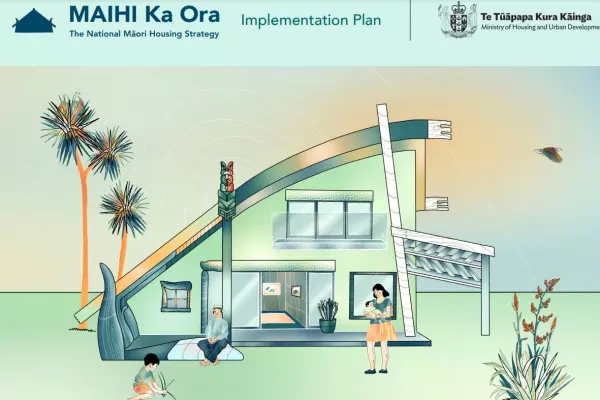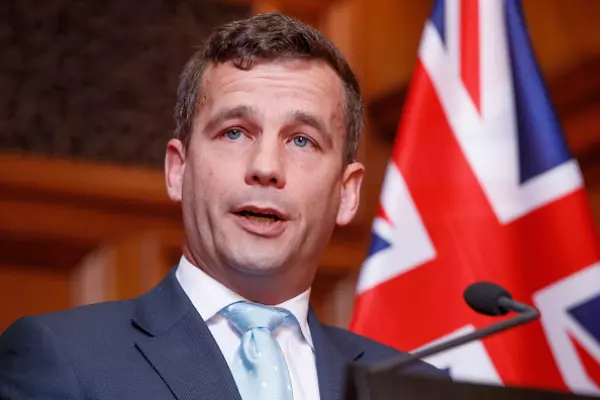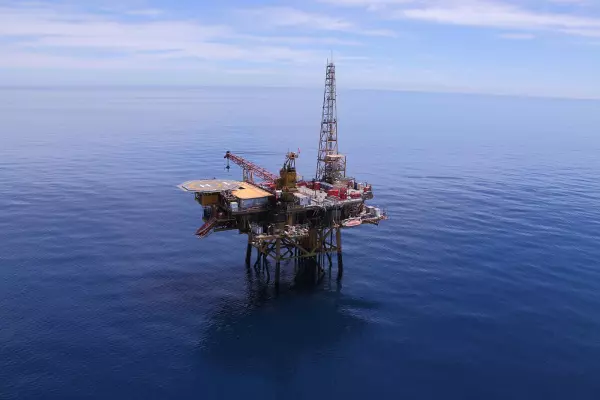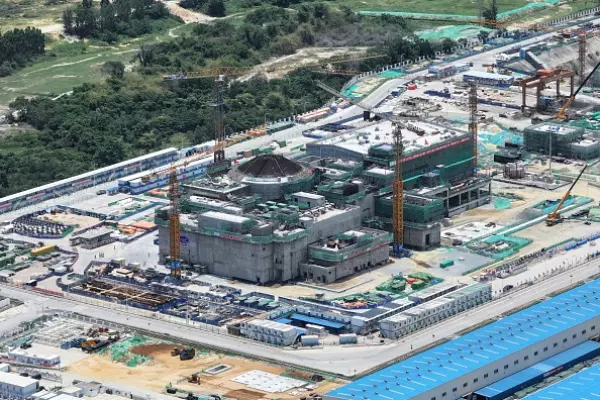Imagine the New Zealand of 1978.
The crown produces and owns all the country's electricity and coal, half the natural gas, and all the pipelines – all energy, in other words, except imported oil.
The government sets a uniform nationwide price for petrol, and licences each petrol station individually.
Cabinet ministers also set the price of electricity, somehow balancing the need to control inflation with maximising government revenue. It's against the law to build a power station without the government’s permission.
Unrest and cartels in the Middle East are making the price of petroleum high and unpredictable.
The government fixes, and chooses to defend against global forces, one of the most important prices of all: the exchange rate.
This creates a chronic “foreign exchange shortage” as the government reaches the limits of its ability and willingness to borrow overseas to keep the NZ dollar artificially high.
So dominant is the self-created currency constraint that the Treasury adds an arbitrary 10% to its rate-of-return calculations for any foreign exchange savings a potential crown investment was expected to yield.
The intimidating Rob Muldoon is both prime minister and finance minister.
“The reason governments exist is to intervene,” he believes, so his policy is to pick the potential winners and support them.
In this world, it's not shocking that as petroleum prices soar, the government would decree (in the national interest, of course) that the nation’s huge natural gas reserves must be consumed domestically for the sake of energy independence and to avoid importing foreign oil.
“Energy self-sufficiency” became a value in itself. That imperative helped create Think Big – multibillion-dollar government investments in a dozen or so mainly energy-based projects that at the time were large and innovative, even by world standards.
Among the senior officials advising the government of prime minister and finance minister Robert Muldoon was John Boshier, then an assistant secretary in the energy ministry.
Boshier’s new book Power Surge: How Think Big and Rogernomics Transformed New Zealand chronicles in meticulous detail the analysis and politics that created Think Big.
Boshier then links Think Big’s legacy to the sweeping reforms of the Rogernomics era and today’s climate challenges.
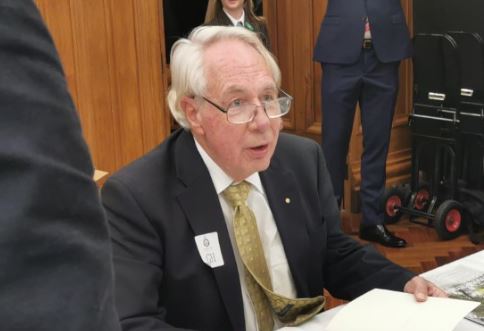 Author John Boshier was at a CIA briefing that pushed the Muldoon government towards its Think Big decisions (Image: BusinessDesk)
Author John Boshier was at a CIA briefing that pushed the Muldoon government towards its Think Big decisions (Image: BusinessDesk)There is real value in Boshier’s meticulous retelling of the development of each of the energy projects. Not every reader will need to know all of the detail he recounts – the exhaustive research will be exhausting for some. It is nonetheless an insider’s account that is worth having on the record.
Boshier says the Muldoon cabinet was motivated to do something about energy independence by a top-secret briefing in Wellington by a senior CIA officer who warned about the likelihood of war in the Middle East. He speaks with authority on this topic: he was in the room.
You say, how many jobs?
Much of the 1981 election campaign focused on the credibility of Muldoon’s promise that 410,000 jobs would be created from the Think Big projects.
That number seemed at the time to be both very large and absurdly precise, especially as not all the project plans had yet been finalised, let alone approved.
Boshier reveals that behind the headlines there was grinding analysis, much of it insisted on by energy minister Bill Birch.
With one major exception – the decision to expand the NZ Steel plant at Glenbrook – the Muldoon government’s Think Big decisions generally followed officials’ advice. So, on the whole, the investments were more rational and less politically driven than it seemed at the time.
But even that assessment comes with caveats, namely that officials’ calculations were constrained by the limited political imagination of the time.
Muldoon had no appetite for a more open economy, and was averse to reforms with short-term pain for working people.
In this, there was human feeling of the sort that critics say was lacking in the later Rogernomics era. Hugh Templeton, a member of Muldoon’s cabinet, recalls that the 18,000 officially unemployed in 1978 was considered a huge and unacceptable number. “We were fearful about its impact on those affected, their families and communities.”
(And so it proved. The next government’s transformation of large government departments into commercial corporations cost 30,000 jobs in the short run, according to NZ Institute of Economic Research data cited in Power Surge.)
The take-or-pay imperative
Muldoon intervened mightily. He was happy to create growth and jobs by shifting risk from workers and consumers – and, often, also from business and investors – onto taxpayers.
“Muldoon believed in the trustworthiness of the state agencies as opposed to the vulnerability of the private sector companies that could, and sometimes did, fall over,” says Boshier, informed by an interview with Birch.
The crown owned half of the huge Maui gas field, and a “take or pay” agreement required it to pay for increasing volumes of the gas, even if it remained in the ground. It was imperative to use the gas.
NZ already had an oversupply of hydroelectricity and more dams (including Clyde, the largest of all) were planned. How should all this natural gas be used? Burn it for more electricity? Pipe it into factories and homes? Use it as feedstock to make petrochemicals like methanol, fertilisers or synthetic petrol?
The commercial viability of these alternatives varied, depending on the scenario you assumed for future energy and product prices.
Equally, gas used for one purpose couldn’t be used for another, and some ventures would depend on byproducts being produced by others.
So no project could be considered in isolation. By Boshier’s account, analysis was reworked over and over as these trade-offs were assessed during the years that Think Big decisions were being made.
In the end, the government supported several very large projects.
 Bill Birch at this week's book launch (Image: BusinessDesk)
Bill Birch at this week's book launch (Image: BusinessDesk)Natural gas was reticulated to much of the North Island. Compressed natural gas (CNG) was supplied as fuel to tens of thousands of vehicles. Liquified petroleum gas (LPG) was made available nationally.
The main trunk railway line was electrified from Palmerston North to Hamilton.
Gas was turned into fertiliser at a new ammonia-urea facility. A methanol plant and the world’s first gas-to-petrol plant, Synfuel, were built in Taranaki.
The oil refinery at Marsden Point, the NZ Steel plant at Glenbrook (the world’s first to make steel from iron sands) and the Tiwai Point aluminium smelter were all expanded.
A table in Power Surge shows that cost overruns plagued the projects. The smallest of these in percentage terms were at the Synfuel plant and the Tiwai Point expansion, and can largely be explained by the high general inflation of the era.
But the plug was never pulled on the high dam at Clyde, even as unforeseen engineering problems blew out its costs by 142%. Overruns of 45% were typical in European rail projects, but the electrification of the North Island’s main trunk line was 150% over budget.
There were other, less obvious but insidious, costs. Bespoke arrangements for the Think Big projects kept the government deeply involved, distorted the economy and reduced productivity.
Sometimes the government invested directly where the private sector was unwilling to take on risk. Sometimes price controls or import protection were needed to make the venture viable. Sometimes, like Synfuel, the crown owned both the input (natural gas) and the end product (petrol) and so was hugely exposed to future energy prices.
Roger to that
It is little wonder that the Lange government that was elected in 1984, and especially its finance minister Roger Douglas, wanted to simplify.
The broad vision of Rogernomics was to expose the economy to real prices, reduce risks to taxpayers, and liberate individuals and firms to bear the good and bad consequences of their own decisions.
This was difficult in the Think Big world, given how much of the energy market the government owned, the take-or-pay agreement, and the extent to which commercial risk was with the crown. As just one example, ending price controls to enable consumers to take advantage of lower global oil prices reduced the value of the government-owned petrol produced by Synfuel.
Boshier says the Lange government did a lot right in extracting itself from the tangle. It “nationalised” billions of dollars of Think Big debt – making taxpayers responsible up front and transparently for costs they would eventually bear anyway – and left each project to sink or swim.
Among the debt taxpayers assumed to make the Think Big projects viable was more than $2 billion for the expansion of the Marsden Point refinery, $1.25b for the synthetic petrol plant, and $1b for the expansion at NZ Steel.
Regulatory reform followed the write-offs, taking the government out of price-setting and leaving the private sector to compete at its own risk.
Then energy markets were deregulated "at a measured pace”. This was especially important in the electricity sector, where natural monopolies in distribution had to be untangled from the statutory and ownership monopolies that had been imposed on the generation side.
A bad sell
More broadly, Boshier says Rogernomics improved productivity and the quality of investment across the energy sector.
But he's critical of the Labour government’s privatisation programme, in which many of the Think Big projects were sold on the international market.
He argues that Fletcher Challenge (FCL) netted “a windfall of over $1.3 billion” in buying Petrocorp (owner of the crown's share of Maui gas) and Synfuel at “distressed sale prices”.
It was “the deal of the century’ – a “substantial transfer of wealth from the taxpayer to the private sector” – that could have been avoided with a smarter sales process by ministers and the treasury.
He comes to that conclusion despite accepting that “hindsight is a wonderful thing”, noting that selling Synfuel and Petrocorp “enabled the government to completely de-risk itself” from the petroleum market, and acknowledging that price was a lower priority for ministers than economic efficiency and reducing the crown’s risk.
FCL itself later “offloaded” its energy assets to mainly offshore buyers when it got into financial strife across its broader portfolio.
Maybe it’s better to waste a crisis
Among the lessons Boshier gleans from all this history is the danger of making decisions in a hurry.
Talk of a “crisis” can help politicians sell the need for rapid change, but haste can also lead to foolishness.
Boshier gives two examples of NZ’s three-year electoral cycle exacerbating this danger.
The Muldoon government hurried some of the most important Think Big decisions to ensure they could be announced before the 1981 election. Justifying the promise of 410,000 jobs pushed Muldoon to go ahead with the NZ Steel expansion against official advice, according to an anecdote from Hugh Fletcher.
Mobil had already suspended negotiations on the Synfuel plant in case there was a change of government. Then, barely a month before the election, Fletcher as chief executive of FCL advised Muldoon that the company would not take part in one of the planned Think Big projects, an aluminium smelter near Dunedin.
Muldoon replied: “Well, I’ll just have to proceed with New Zealand Steel then, won’t I?”
Fletcher, aware of the economics of the steel industry and the project, recalls saying: “I wouldn’t do that if I was you, Prime Minister.” Muldoon replied: “Yes, but you don’t have an election, do you?”
The Treasury had assessed the then value of the NZ Steel expansion as minus $225m, but it was approved because “Muldoon and Birch wanted to enter the election with at least one of the world-scale projects finalised”, Boshier writes.
Equally, David Caygill recalls as finance minister pushing through the privatisation of Synfuel to ensure the job was done before the 1990 election, which “I never for a moment thought we would win”.
Energetic government
Just as with Think Big four decades ago, climate change policy today centres on energy and decisions by Big Government.
“To achieve a zero-carbon society will require even more dramatic reform than Rogernomics in the 1980s,” says Boshier.
“A major technological upheaval will be needed, comparable to the industrial revolution in the 19th century.”
The trade-offs that Boshier recalls policymakers facing in the 1970s and '80s are eerily familiar in our current “climate emergency”.
Should we welcome the potential closure of the Tiwai Point aluminium smelter because it eliminates 500,000 tons of carbon emissions a year and frees up electricity to produce “green hydrogen”?
Or should we prefer the smelter to stay open since it is carbon-efficient compared with the world’s other producers of aluminium and, anyway, green hydrogen may be uneconomic?
Is the at least $4b that would be needed for the Lake Onslow pumped hydro “battery” worth it for dry-year coverage, or just today’s version of Think Big’s willingness to pay almost any price for energy reliability?
When the current government decided not to intervene in the recent closure of the Marsden Point oil refinery, had it learned the lessons of trying too hard to avoid dependence on foreigners?
Despite his deep chronicle of the risks and follies – the near impossibility, arguably – of seeing into the future and of politicians and public servants getting things right, Boshier is, in the end, optimistic.
Economic models, including the Treasury’s “better business cases” framework, are more sophisticated and consider values beyond finance, for example.
No big bang will be needed to meet the zero-carbon goal by 2050, and the Climate Commission’s proposals show the way.
Quibbles
Power Surge is extensively illustrated with political cartoons and news photos of the era and is thoroughly footnoted.
The index is better than in many NZ volumes, but has annoying gaps. If the reader recalls, for example, that Professor Paul van Moeseke’s criticisms of the proposed aluminium smelters are mentioned more than once in the text, the index doesn’t help, as van Moeseke isn’t listed there.
A handful of grammatical errors and layout inconsistencies sometimes distract the reader.
The book opens with a startling clanger. In the third paragraph of Chapter 1, Boshier says that oil imports in 1978 were costing $500m annually in overseas funds, which was “about 15% of gross national product”.
Statistics NZ puts the country’s GDP that year (a slightly different measure than GNP, which Stats NZ doesn’t publish) at $15.7b, of which $500m would be about 3.2%, not the 15% cited.
BusinessDesk asked Boshier to clarify. The 15% figure came originally from Muldoon, the author explained. He immediately and gallantly agreed that the number must be wrong, and he’s sorry he didn’t check it.
And now we have one more thing to blame on Rob Muldoon.
Update: Since this review was first published, John Boshier has provided a 1978 cabinet minute showing that the erroneous GNP percentage was approved for public release by Muldoon as part of the announcement that energy self-sufficiency was to become a national goal. It is not clear which officials drafted that text, but the papers suggest that the entire cabinet was either asleep at the wheel that day, or was disinclined to point out errors to that particular boss.
John Boshier, Power Surge: How Think Big and Rogernomics Transformed New Zealand, New Holland Publishers, 2022, $39.99, ISBN 9781869665623







